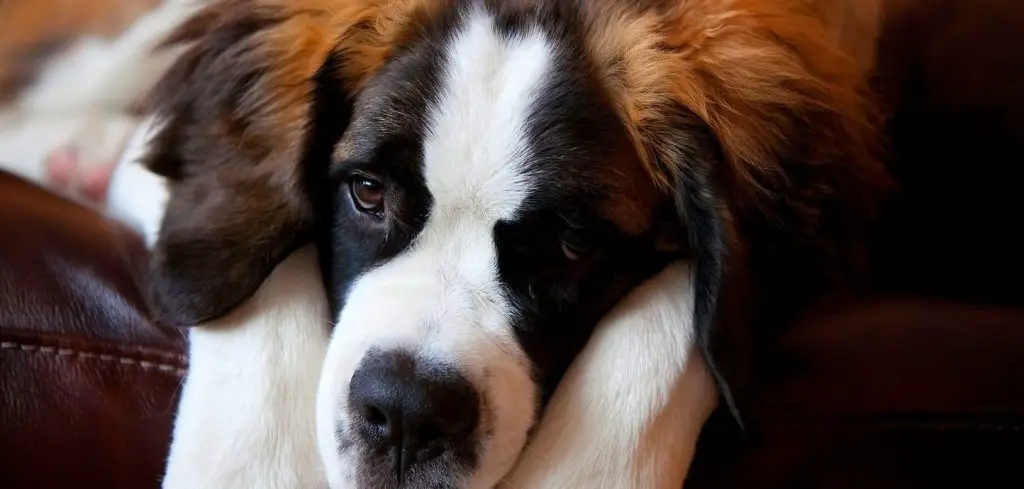If a dog is suddenly foaming at the mouth with no other symptoms, it can be alarming for any owner.
While foaming is often associated with something serious, it can sometimes occur due to harmless reasons as well.
We outline the possible causes of a dog foaming at the mouth with no other symptoms, what you can do at home, and when to seek veterinary help.
Table of Contents
Dog Foaming at Mouth No Other Symptoms — Why It Happens
Dogs may foam at the mouth for a variety of reasons, ranging from simple excitement to underlying medical issues. In some cases, stress or anxiety can cause drooling that looks like foam. Exercise and overheating may also trigger excessive salivation that bubbles around the mouth.
Dental disease, nausea, or a bitter taste from something a dog licked or chewed can all appear as foam without other obvious signs.
In rare cases, toxins or seizures may be involved even if no immediate symptoms are visible. Understanding the context and frequency is key to figuring out what’s going on.

Dog Foaming at The Mouth With No Other Symptoms: Possible Causes
Stress or Anxiety
Stress and anxiety are very common triggers for foaming. When a dog is stressed, their salivary glands can go into overdrive, leading to drool that froths into foam. This can happen during a car ride, fireworks, or a trip to the vet.
Aside from the foam, the dog may not display other obvious symptoms, which makes it confusing.
While not dangerous in itself, repeated stress-induced foaming can take a toll on a dog’s wellbeing.
Related: Dog shaking and not eating (Here’s why)
Excitement or Exercise
Some dogs foam at the mouth after playing, running, or engaging in high-energy activity.
The combination of heavy panting and saliva can create a foamy appearance around the mouth. In these cases, the dog often looks otherwise happy and energetic.
While usually harmless, persistent foaming after exercise may signal overheating or dehydration, which requires caution.
Bitter Taste or Ingested Irritant
If a dog licks or chews something with a bitter or unpleasant taste, the body responds by producing large amounts of saliva to flush it out.
This saliva can foam up as it mixes with air. Common culprits include household cleaners, certain plants, or even flavored medications.
A dog may appear completely normal aside from the foam, but ingestion of toxic substances must always be considered.
Dental Disease
Oral problems such as gingivitis, broken teeth, or infections can cause excess drooling that appears as foam.
Dogs with dental pain may continue eating and acting normally, making the foaming seem like the only sign.
Over time, however, untreated dental disease can worsen and lead to serious health problems.
Heat and Overheating
Foaming may occur when a dog becomes overheated. As they pant heavily to cool down, saliva can froth at the corners of the mouth.
While mild overheating may not show other symptoms right away, it can progress quickly to heat exhaustion or heatstroke, which are emergencies. Any foaming in hot weather should be taken seriously.
Seizure Activity
Although less common, mild seizure activity can sometimes cause foaming at the mouth without other clear symptoms.
A dog may appear normal before or after the event, leaving the foam as the only sign. Even subtle seizures require veterinary evaluation, as they may indicate underlying neurological issues.
What to Do If Your Dog Is Foaming at The Mouth With No Other Symptoms
If your dog is foaming but otherwise acting normal, remain calm and observe carefully.
Look for possible triggers such as excitement, exercise, stress, or something the dog may have licked. Offer fresh water to help flush out any irritants or bitter tastes.
Keep your dog in a cool, calm environment to reduce stress or heat-related foaming. Monitor breathing, energy level, and overall behavior to see if other symptoms appear.
If the foaming resolves quickly and does not return, it may not require immediate medical care.
However, repeated or unexplained episodes should always be discussed with your veterinarian to rule out dental, toxin, or neurological concerns.
When to Call or Visit Your Vet
If the foaming occurs alongside drooling that doesn’t stop, difficulty breathing, lethargy, or vomiting, contact your vet right away. These may indicate poisoning, heatstroke, or a more serious medical issue.
Seek urgent veterinary help if your dog recently ingested something potentially toxic, such as medications, plants, or chemicals, even if no other symptoms are present.
Foaming linked to seizures, collapse, or sudden changes in behavior also requires immediate evaluation.
Even if your dog seems fine after foaming, recurrent episodes should be checked out. Sometimes subtle signs are the only early clue of an underlying condition.
Read more: Dog Coughing No Other Symptoms (When it’s harmless and when it’s not)
Key Takeaway
Foaming at the mouth in dogs without other symptoms can sometimes be harmless, but it should never be ignored.
Triggers like stress, excitement, bitter tastes, or mild overheating may cause temporary foaming. However, dental disease, toxins, or even seizures can also be at play.
The best approach is to stay observant, provide comfort, and contact your veterinarian if the foaming recurs, worsens, or is paired with other concerning signs. Acting promptly helps protect your dog’s health and gives you peace of mind.
